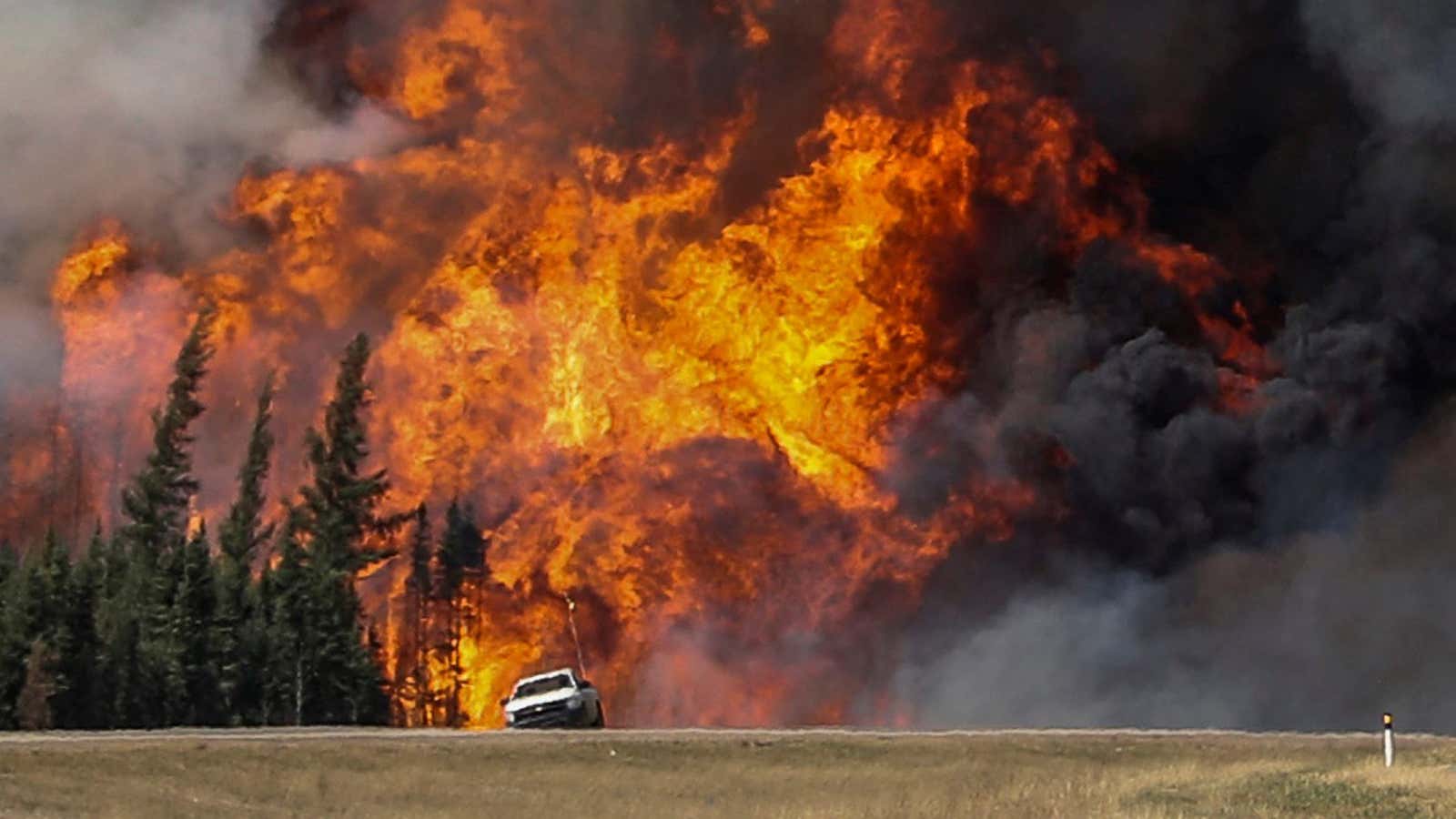Oil is in its biggest price surge in six months, sending a potential rescue line to desperate producers who have been shutting down rigs to stave off bankruptcy. Futures prices for Brent crude, the international benchmark, have risen as high as $49.47 a barrel today.
The reason for the surge is a confluence of news: The boreal forests around Canada’s oil sands have been on fire for two weeks now, and authorities have asked another 12,000 people to leave the area, on top of the 80,000 people who have already fled. And in Nigeria, attacks by a group called the Delta Avengers have helped shut production to a 20-year low.
Observing all this mayhem, Goldman Sachs on May 16 reversed a bearish bet, raising its oil price forecast to $51 a barrel by the end of the year, up from $45. Prices already had been climbing in lurches since a low of under $30 a barrel in February, but the Goldman prediction, on top of the news from Canada and Nigeria, has given oil a big push toward $50.
Faced with low prices, stressed US oil producers are continuing to shut down their drilling rigs. Last week, they stopped another 10 rigs, bringing the total on line to 318, down 80% from the peak of 1,609 in October 2014. Meanwhile, 130 North American oil and gas companies have declared bankruptcy since the start of 2015.
Jamie Webster, a Washington-based oil analyst, said the rise in prices will lead oil drillers to seek some financial stability by buying hedging instruments, thus locking in the higher prices. They are not likely to make any hasty pushes back into higher production, he said, because the Canadian fires will eventually be put out; in addition, currently shut-in Libyan oil could return to the market, as warring factions there have struck a fragile truce.
“Part of the issue is the volatility,” Webster told Quartz. “A week ago, oil was $45 a barrel, a month ago $43, a quarter ago $34 and a year ago $66. It’s hard to get comfort in such an environment.”
Then there is Goldman, which giveth and taketh away: While forecasting higher prices this year, it has continued its bearish bet for 2017. The investment bank predicts that the global oil glut will resume early next year, pushing oil prices back down to $45 a barrel.
